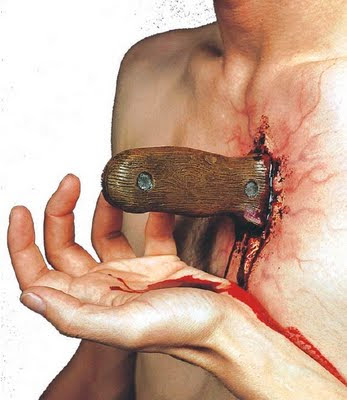I've never been in a knife fight, don't want to be. I'm not one of those lives-for-danger, volunteers-for-the-probably-won't-come-back missions. If something goes bump in the night at my house or in the yard, I'll arm myself and go see what it is, but I'm not the guy who signs up to go to distant lands and kill folks who live there. It takes a different mind set to be a deliberate warrior, and I don't have it.
Warriors are folks to go to war. They might not always do it voluntarily, but because I've studied a lot of marital arts, that does not a warrior make.
I know guys who get bored if somebody isn't shooting at them or waving knives in their direction. I don't get bored, way too much interesting in life and it's short at best. I literally cannot remember the last time I was bored.
But: Back to cutting. I've never been in a knife fight, but I have used a scalpel. I know what it feels like to lay one on somebody and open up a part of them. What the suddenly welling-blood looks like, feels like on a latex-gloved hand, even how it smells. Of course, the intent in those cases was the healing edge–to make a patient better by excising something causing him or her illness and discomfort. Lance this, cut that out, resect that down there. My skill is minimal, lumps and bumps, and I've sewed shut more than I've opened up. I've stood next to those who did way more. I watched an autopsy back in the day, I've seen people who went from alive to dead as I watched.
This doesn't make me special. But it does mean that I have a certain familiarity with what happens when steel meets flesh, and as a result, if push comes to shove, a belief that I can do that if my life or that of a loved one rests on my ability to do it.
If the choice is cut or die, I'm comfortable with which way I'd go.
Not that it would be fun. And not to say that in the moment, my personal narrative will go as I believe it will. But I'm of the mind that if I have done something once, it will be easier to consider the notion of doing it a second time, come the necessity. I don't revere all life equally. Some folks are way more important to me than others.
If you can't look at the image above without feeling queasy, or if the notion of cutting somebody, makes you quail so that you aren't sure you could do it? Don't carry a knife for protection. If you aren't willing to use the tool, it just takes up space, and it might get you killed if somebody who will use it takes it away from you.




















